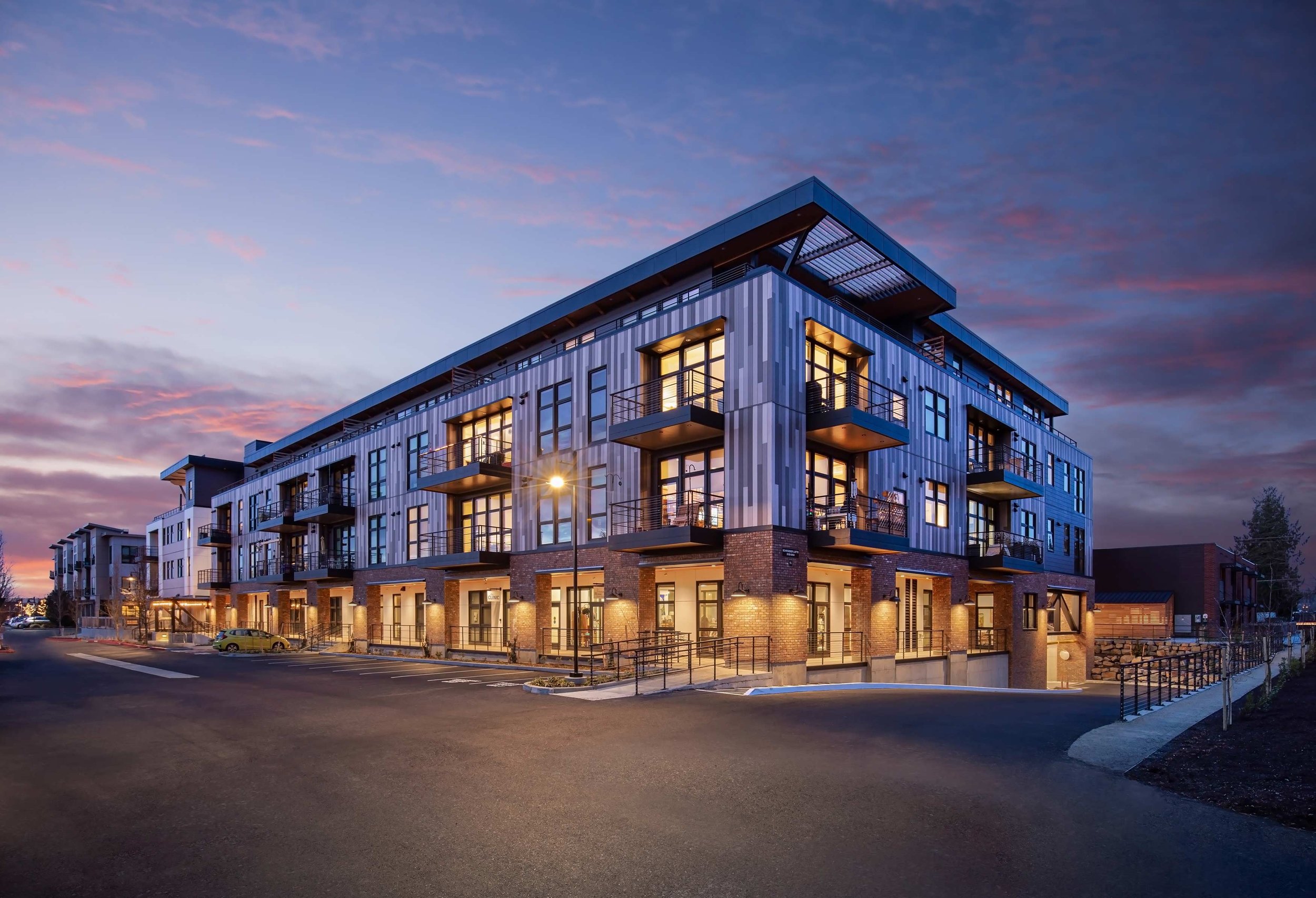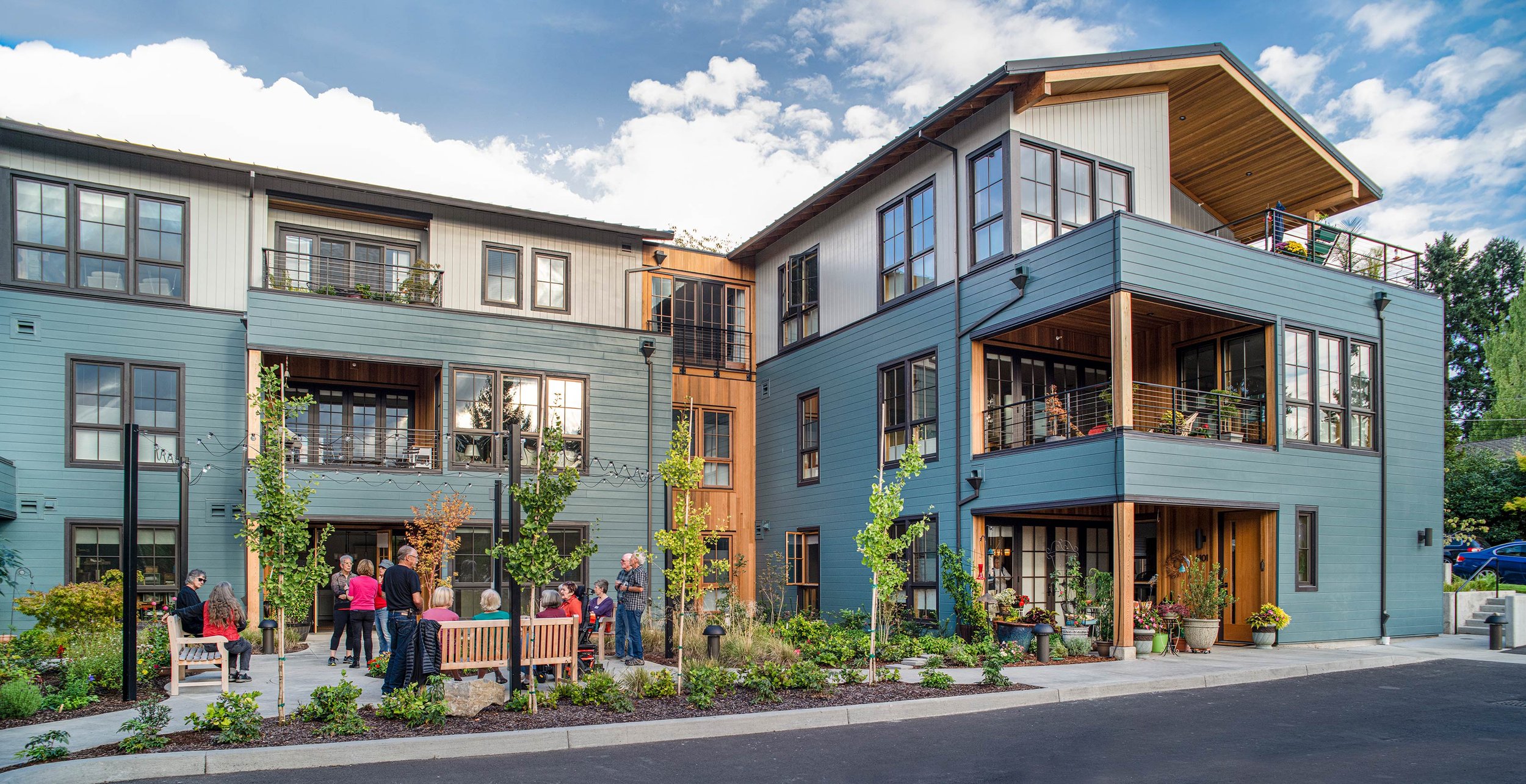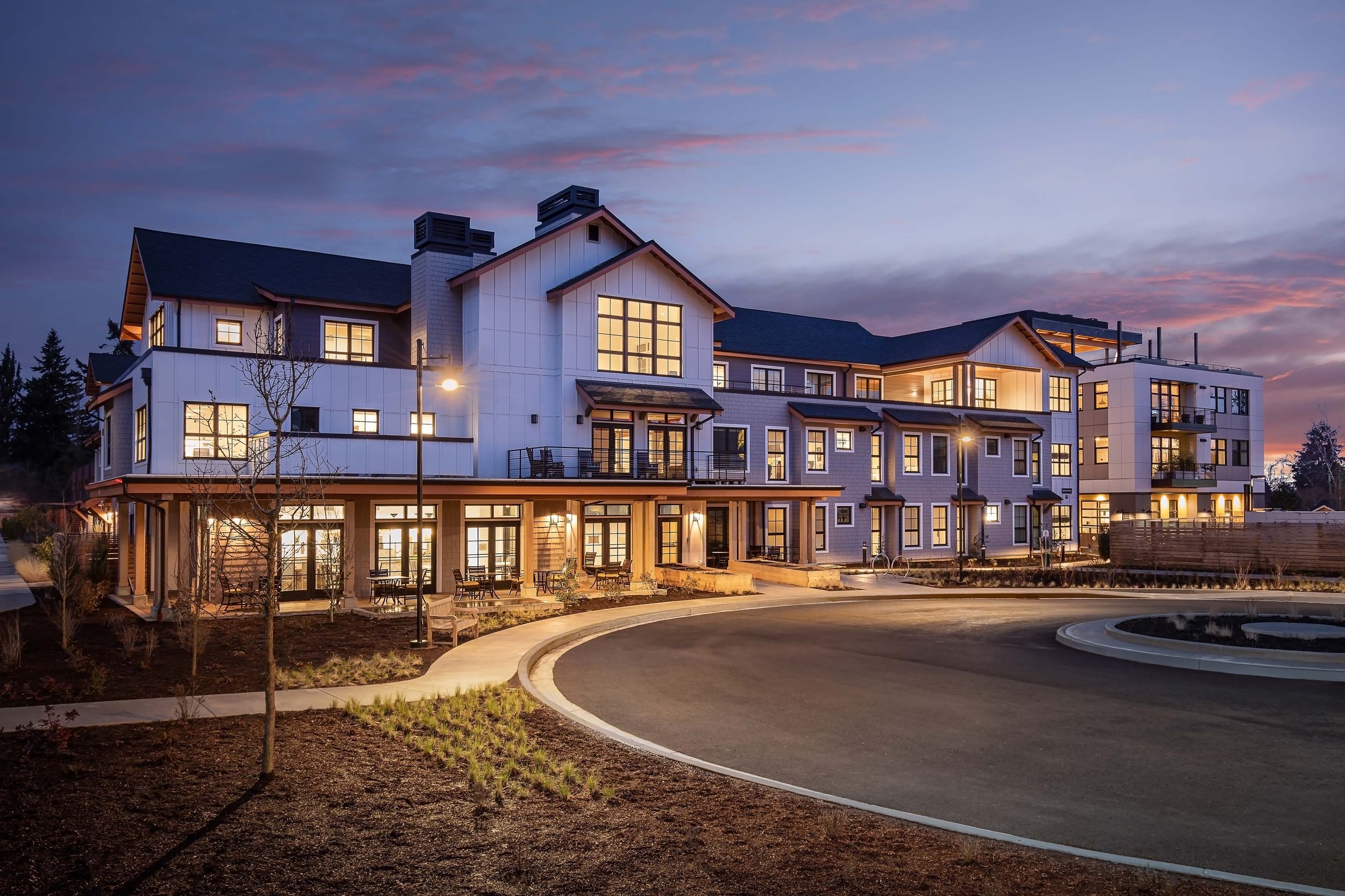Rose Villa Schroeder Lofts
Lofty ambitions in senior living design
Schroeder Lofts is part of Rose Villa’s Phase 3 of upgrades, additions, and improvements to its 22-acre garden campus. The new senior living home is a 4-story wood-framed building over a below-grade parking and service level, connected to the neighboring Madrona Grove. The first floor includes four residential garden lofts facing the courtyard as well as community spaces connected by an outdoor covered arcade that draws the sidewalk toward the building. Also along the arcade is a medical health clinic, a sewing and quilting club room, and a resident-run second-hand shop called Treasure House. The upper floors house another 31 lofts for a total of 35 resident homes.
Client
Rose Villa Senior Living
Location
Portland, OR
Size
89,100 sf
Year
2022
Achievements
2022 EFA Design Showcase Honorable Mention
2023 DJC Top Project First Place for Multi-Family & Mixed-use
2023 AIA Design for Aging Review Special Recognition Award
2024 EFA Design Showcase - Award of Merit
SEA’s inspiration for Schroeder Lofts came from turn-of-the-century brick industrial warehouses in the Pearl District that have been repurposed into housing. It is characterized by a juxtaposition of old and new elements, large expanses of glass, antique brick, and black industrial fixtures paired with contemporary materials for the windows and upper siding. The building mass is broken down with changes of color and materials at the north end, creating a visual connection to the other campus core buildings.
The thoughtful massing of Schroeder Lofts achieves multiple goals, including a mix of public and private outdoor spaces and street activation. At the street level, the mass is pulled toward the courtyard like a drawer, creating the covered arcade on the west and providing access to the public and community spaces from the street. On the east side, this shift creates outdoor terrace space for the Level 2 residences. At the penthouse level, the massing steps back on all sides, creating private terraces and a large public terrace on the east side.
Rose Villa Phase III includes Schroeder Lofts, Madrona Grove, and Trillium Townhomes (designed and built by Green Hammer).
Large windows allow natural light to fill apartments and offer residents views of the garden campus and surrounding neighborhood. Residents of Schroeder Lofts chose their own apartment fixtures and finishes, ensuring that each space truly feels like ‘home.’
The 5 penthouse units offer nearly 12-foot tall ceilings within the living/dining space, accented with warm cedar wood. Each penthouse includes expansive outdoor patio space.
On the fourth floor, the elevator lobby connects to an outdoor walkway garden and a partially covered outdoor terrace offers residents expansive views of Mt. Hood and the Willamette River.
The recreation room uses bright colors, warm woods, and contemporary furniture to create a vibrant space. A jewel-toned area rug anchors the fireplace and separates the room into two uses—a kitchen and a game area. SEA’s interior design team worked closely with Rose Villa and a focus group comprised of residents to gather design input. This multi-use space includes a kitchen for events and cooking classes, a variety of options for dining seating, two lounge areas for watching television or relaxing by the fire, as well as an active area including a pool table, shuffleboard, wall scrabble and ping pong. Handmade ceramic tiles in gold tones on the kitchen backsplash help to balance the vibrant upholstery and rug while a grand brick fireplace brings in materiality from the exterior and provides an inviting place to relax or socialize.
The Schroeder Lofts design innovates by using sustainable features not typically found in senior living communities. The project is designed with sustainability stewardship in mind and creates an environment that is healthy for staff, residents, and nature. The most notable sustainable feature is ROSIE—Recycled Organic “Stuff” is Everywhere—developed in partnership with Biohabitats. ROSIE is a system that recycles greywater in Schroeder Lofts. Sources like bathroom sinks, showers, and washing machines are plumbed to deliver greywater to the garage-level treatment room where it goes through a multi-step process, including a pre-filter, a textile filter, an ozone filter, and a micron filter. The filtered water is used for non-potable water demands, such as toilet flushing or irrigation. ROSIE saves approximately 303,214 gallons of potable water per year.
Personal relationships and connections to the community beyond Rose Villa informed our design approach. The campus’s child development center anchors the ground floor of the north end of the Schroeder Lofts and provides childcare for up to 36 children. The program connects the senior residents with children and parents every day as they access the center through the main lobby or play outside in the adjacent playgrounds. The play areas are divided into three areas including one within the enclosed Madrona Grove Garden where residents can interact directly with the kids. Research indicates that intergenerational programs may ease social isolation and increase the well-being of older adults.
Schroeder Lofts and Madrona Grove surround a shared landscaped courtyard that serves as an outdoor room, encouraging neighbors to interact and creating a strong dialogue between buildings across the courtyard. Despite different typologies and aesthetic characteristics, the design approach ensures that the buildings feel unified.
A pergola was initially value-engineered out of the project, but the excitement surrounding the structure encouraged SEA and Bremik Construction to donate time and materials to build one in the new courtyard.
Acknowledgements
SEA Team
Sid Scott
Tim Gordon
Margaret Wilson
Susan Balogh
Kara Grothen
Trent Jorgensen
Gillian Stoneback
Andra Zerbe
Drew Dippel
Hope Friedman
Jason Wesolowski
Nathan Junkert
Bob Carbaugh
Erica Baggen
Andrew Kraus
Megan Schmitz
Melisse Kuhn
Project Team
Bremik Construction
Klosh Group
Interface Eng.
Humber Design
WDY, Inc.
Veneklasen
Shapiro/Didway
BioHabitats
JBK
Klosh Group
Photography Credits
David Papazian




















